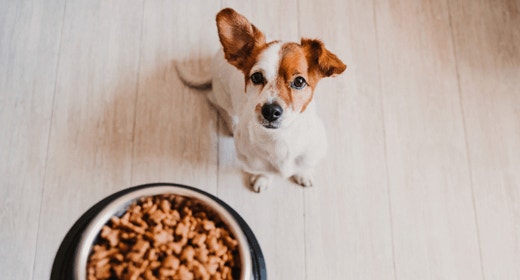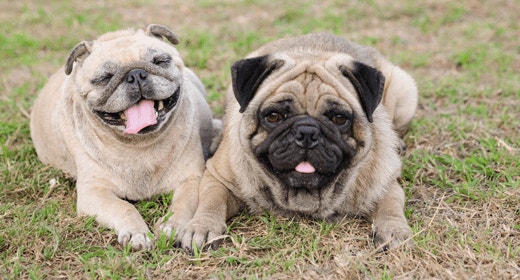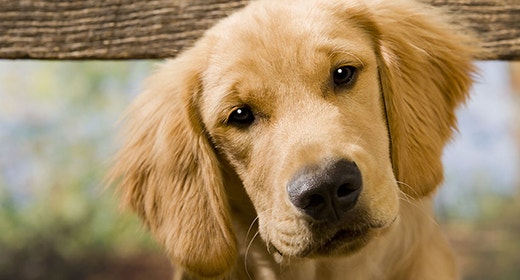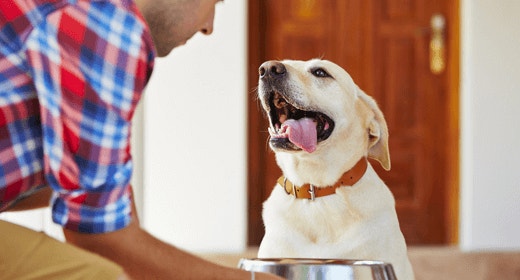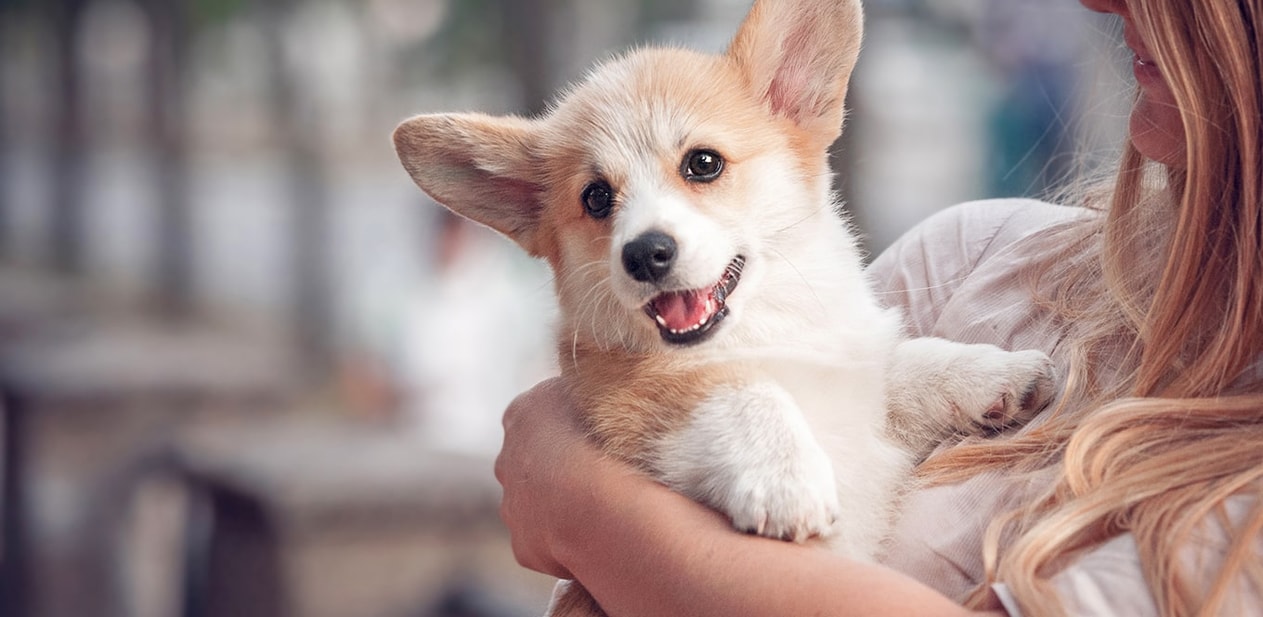
What to Know When You Bring Your Puppy Home
The day is finally here — you’re bringing your new puppy home! We’ve put together a new puppy checklist to help you prepare for those first few days: the supplies you’ll need, how to puppy-proof your indoor and outdoor spaces, and how to introduce your new puppy to family members and other household pets. Welcome to pet parenthood!
Jump to:
- Supplies You’ll Need for Your New Puppy
- Keeping Your Puppy Safe around Your Home
- The First Days at Home with Your Puppy
- Training and Introductions
Supplies You’ll Need for Your New Puppy
Before you bring your puppy home, be sure you have the following supplies:
- Premium pet food to get your new puppy off to a good start. IAMS™ Puppy contains omega-3 DHA to support strong brain development, essential minerals to help build strong bones and protein sourced from chicken and egg.
- Food and water bowls; stainless steel is ideal because it won’t break or absorb odors.
- Identification tags with your puppy’s name, and your name and phone number
- An adjustable collar and a leather or nylon 6-foot leash that’s ½- to ¾-inch wide; consider using a breakaway collar with plastic clips that will unsnap if your puppy gets caught on something. For a comfortable collar fit, allow for two fingers of space between the collar and your puppy’s neck.
- An airline-approved home and travel crate that will accommodate your puppy’s adult size. This crate will serve as your puppy’s new “den” at home, when traveling or when riding to the vet’s office. Their scent in the crate will provide comfort and a sense of security during stressful times.
- Stain remover for cleaning up accidents
- Brushes and combs suited to your puppy’s coat; ask your vet or breeder about an appropriate brush or comb for your dog.
- Grooming essentials like dog shampoo, toothbrush and toothpaste
- High-quality, safe chew toys to ease teething; keep in mind that toys with parts that squeak or whistle can be dangerous if swallowed.
- Flea, tick and parasite preventive medications
- Nail clippers
- Treats for training and rewarding
Keeping Your Puppy Safe around Your Home
Puppies tend to sniff out trouble, and while that mischievous streak can be endearing, you’ll want to take some time to check your indoor and outdoor spaces to ensure they are safe for your new pup.
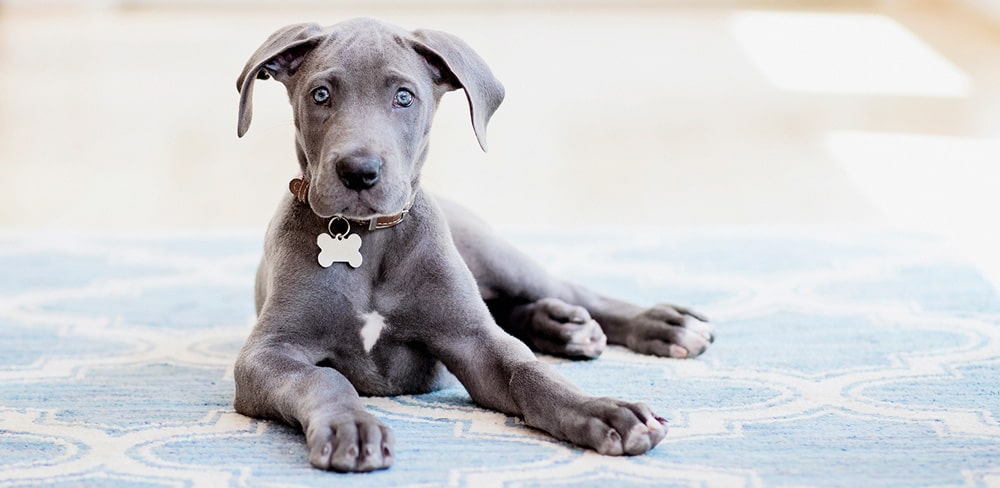
Puppy-proofing Your Indoor Space
- Set up a safe, quiet spot for your puppy’s crate where they can rest and sleep.
- At first, use baby gates or pens to limit your puppy’s access to your whole home. As your puppy grows, gets potty trained and learns the rules of the house, you can increase access and remove the gates.
- Move or block access to electrical cords, or use cord concealers.
- Secure your trash cans, which could contain choking hazards or toxic items.
- Keep cleaning supplies and medications secured and well out of reach. The same goes for batteries and small items like jewelry and kids’ toys.
- Check your household plants — some are toxic to dogs when consumed. Remove any that are unsafe for your pet, or place them out of reach.
Fencing Options
Keeping your puppy safe in your yard requires good fencing. The option you pick will depend on your puppy’s personality, your property and your budget. Consider these options:
- Privacy fencing: Privacy fences have no openings and provide excellent containment.
- Chain link: Inexpensive chain link works well and is durable.
The First Days at Home with Your Puppy
The ideal time to bring your new puppy home is when the house is quiet. Discourage friends from stopping by, and don’t plan for overnight guests. First, establish a daily routine and follow these steps:
- 1. Before bringing your puppy in the house, take them to the designated potty area in your yard and spend a few minutes there. If your puppy goes, praise them. Be sure to take them to this spot each time they go potty.
- 2. Take your puppy to the room with their crate. This area will serve as their new “den” for several days. Put bedding and chew toys in the crate, leave the door open and line the area outside of the crate with newspaper in case of an accident. Let them investigate the crate and the room. If they chew or urinate on their bedding, permanently remove it from the crate.
- 3. Keep a close eye on your puppy while they are getting used to their new den, and spend time with them in their space. This will help forge a sense of “pack” and establish you as the pack leader.
Training and Interactions
Treat your puppy the same way you would an infant: with patience, constant supervision and a gentle touch.
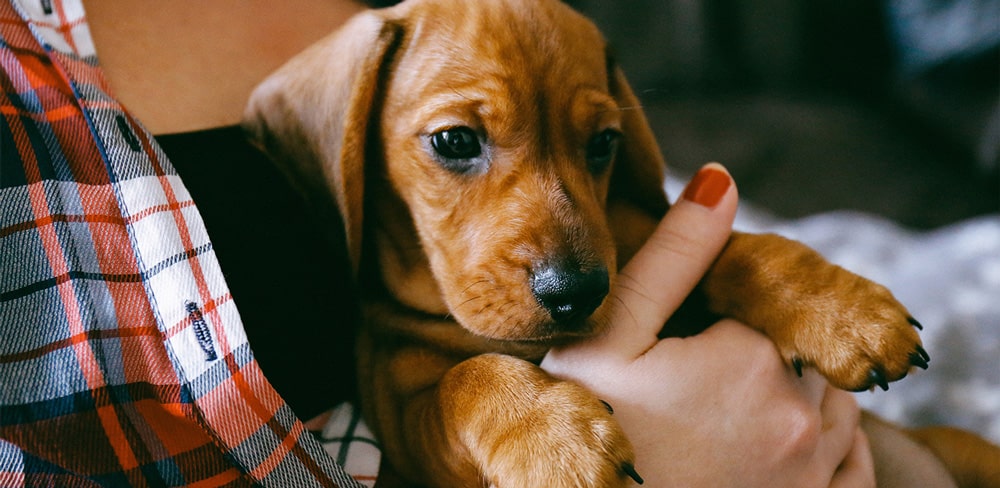
Safely Picking up a Puppy
A puppy’s body is fragile. Avoid picking up your puppy unless you need to. If you must, use these steps:
- 1. Place one hand under your puppy's rump, and place your other hand under their chest.
- 2. Carefully lift with both arms. With a small adult dog, use the puppy technique. For larger dogs, wrap both arms around their legs, draw them to your chest and lift.
Socialization
The way you interact with your puppy at this age is critical to their socialization. Use these tips:
- Plan to spend a lot of time with your puppy in the first few weeks so you can acclimate them to your normal daily routine.
- Supervise your puppy at all times and interact with them regularly.
Potty Training
- Be alert for signs (sniffing and circling) that they have to go to the bathroom, and take them outside immediately.
- A young puppy has no bladder control and will need to urinate immediately after eating, drinking, sleeping or playing. At night, they will need to go outside at least every three hours.
- Don’t punish an accident. Never push their nose in the waste or scold them — they won’t understand and may learn to go to the bathroom when you’re out of sight.
- Praise your puppy every time they go to the bathroom outside.
- Feed your puppy a formula designed for puppies. Like babies, puppies need nutritious, highly digestible food.
Children and Pets
Ideally, your kids should help you choose your puppy. When you bring them home, don’t let your children play with them constantly. Puppies need a lot of rest, just like a growing child. Limit puppy-children play sessions to 15 to 30 minutes, two to three times a day.
- Young children might be tempted to shout if they think the puppy is doing something wrong. Be sure kids understand that puppies and dogs can be easily upset and startled by loud noises.
- Discourage teasing. Keeping a toy just out of reach will reinforce bad habits such as jumping up and excessive barking.
- Wagging tails and play biting can be too rough for young children. Supervise puppy-child interactions and separate them if the play is too rough.
- Teach kids to care for a dog by showing them how to feed and groom them.
Meeting Resident Pets
- Keep resident pets separated from your new puppy for a few days.
- After your new puppy is used to their new den area, put an expandable pet gate in the doorway or put your puppy in their crate.
- Give your resident pet access to the area. Let pets smell and touch each other through the crate or pet gate. Do this several times over the next few days.
- Give the resident pet access to the den area with your new puppy out of his crate. Supervise their meetings and go back to through-the-gate/crate meetings if trouble arises.
Bringing your puppy home is just the beginning. You have years of cuddles, walks, backyard romps and face licks to look forward to. By preparing your home and family for the first few days, you’ll be setting up your puppy with a strong foundation that will stick with them throughout their life.

